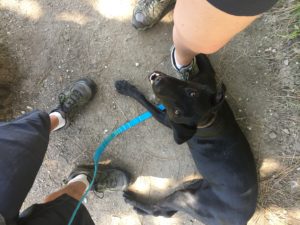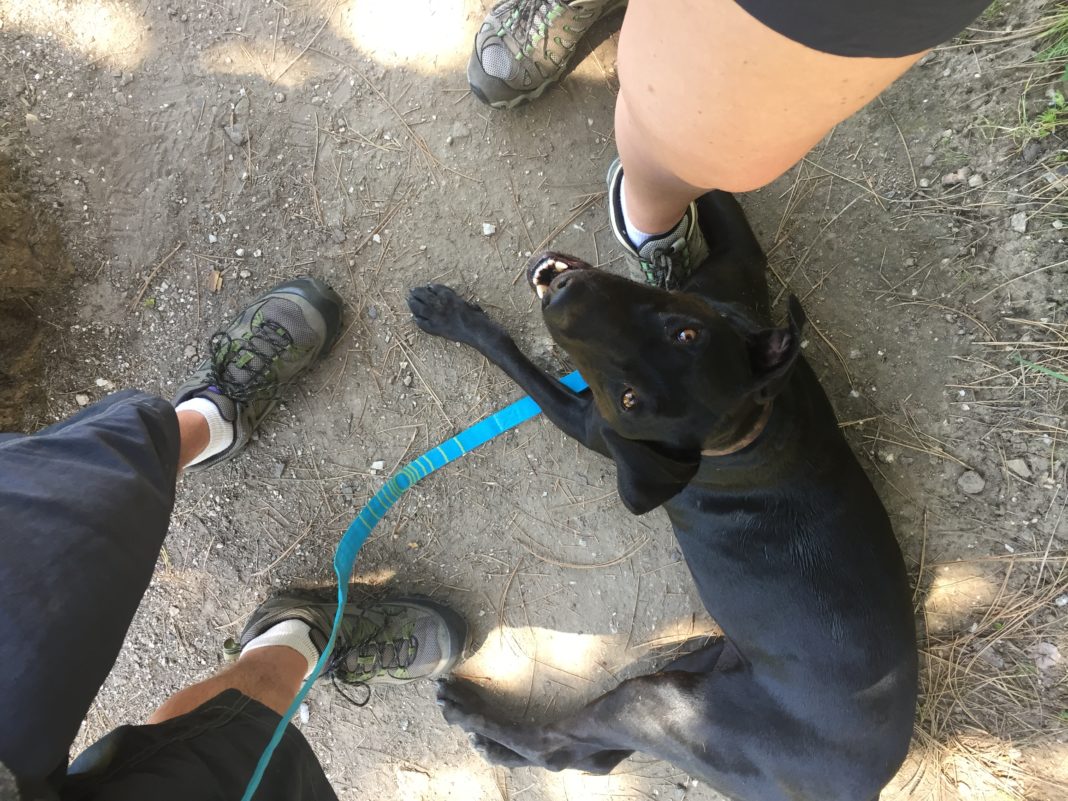Sun, like snow, is rare enough in the Pacific Northwest that not everyone knows what to do with it when it arrives. In some cases, that leads to an unfortunate side effect – people leaving their dogs inside cars that quickly reach dangerous temperatures.

“We see a fair amount of that here,” says Dr. Blair Burrgren, a veterinarian at Olympia Pet Emergency. “I have a colleague in Arizona and apparently they don’t see this problem very often because everyone is more heat savvy.”
Hot cars are the number one culprit when it comes to overheated animals. When the outside temperature is 75 degrees, the interior of a car will reach 100 degrees in just ten minutes, posing dangers to animals left inside. However, even normally harmless activities can lead to problems, says Dr. Burrgren. “When it gets in the 80’s and 90’s, it’s not uncommon to see a happy, healthy dog come in with heatstroke from something as benign as chasing a ball because they don’t know when to quit.”
Dog owners should look for symptoms like gums and tongue that turn a brick red color rather than healthy pink and heavy panting, he says, especially if a dog seems unable to get its breath back. “A happy dog will pant, but if you feel like it’s more significant than it should be, get them into a shady place. If the dog enjoys swimming, have them wade into water.”
Some pet owners will attempt to rectify the problem by simply throwing their dog into a nearby body of water, but that would be a mistake, says Dr. Burrgren. “If a dog is distressed, he’s not going to have his wits about him and won’t be able to swim.”
The most important thing is to pay attention and be an advocate for your dog, he maintains. “Sometimes a dog will tell you they’ve had enough, but if they’re doing something they really enjoy, they’ll just keep going past their limit.”

If matters have gone too far, dogs end up at the animal hospital. At that point, they’re commonly pretty worked up, says Dr. Burrgren, and owners can be, too. “We may sedate them and give them some pain medication. We’ll often put them on IV fluids and use fans and towels to cool them off. We use both passive and active cooling techniques.”
Severe heat stroke will activate a dog’s blood clotting system, causing a hemorrhage or bleed similar to what would happen if they’d ingested rat poison. “The worst case scenario is that they will need a blood transfusion,” he says. “Dogs with heat stroke can be critically ill for a while.”
Certain dogs are at higher risk for heat-related issues, including those that are overweight and brachycephalic dogs (those with relatively broad, short skulls like pugs, boxers and bulldogs). “They already have difficulty breathing so they have problems diffusing heat,” says Dr. Burrgren.
The best prevention is to know your own limitations and those of your pets, he advises. “Have plenty of cool fresh water available and keep everyone hydrated.”
For more information about Olympia Pet Emergency visit the Olympia Pet Emergency website or call 360-455-5155.
Sponsored


















































